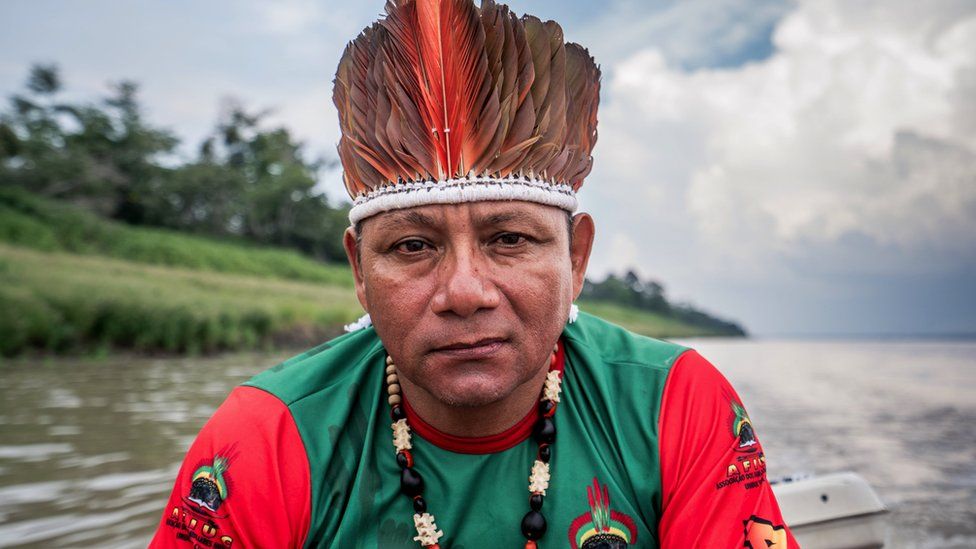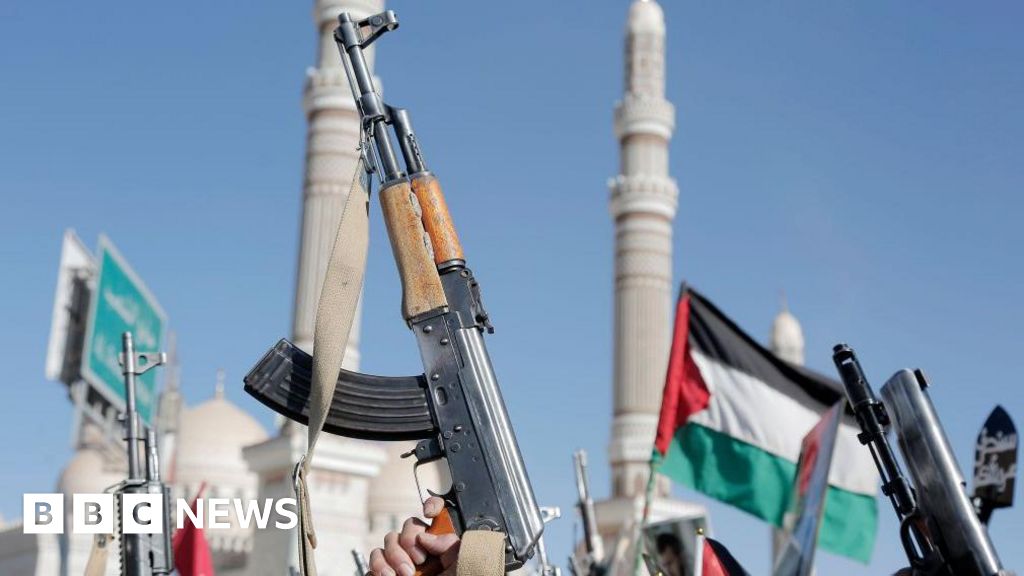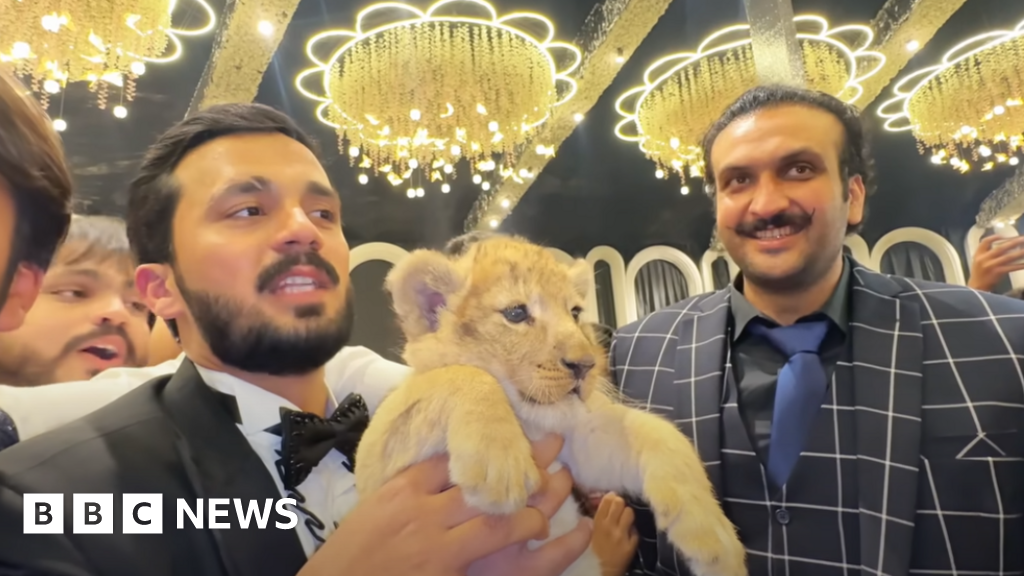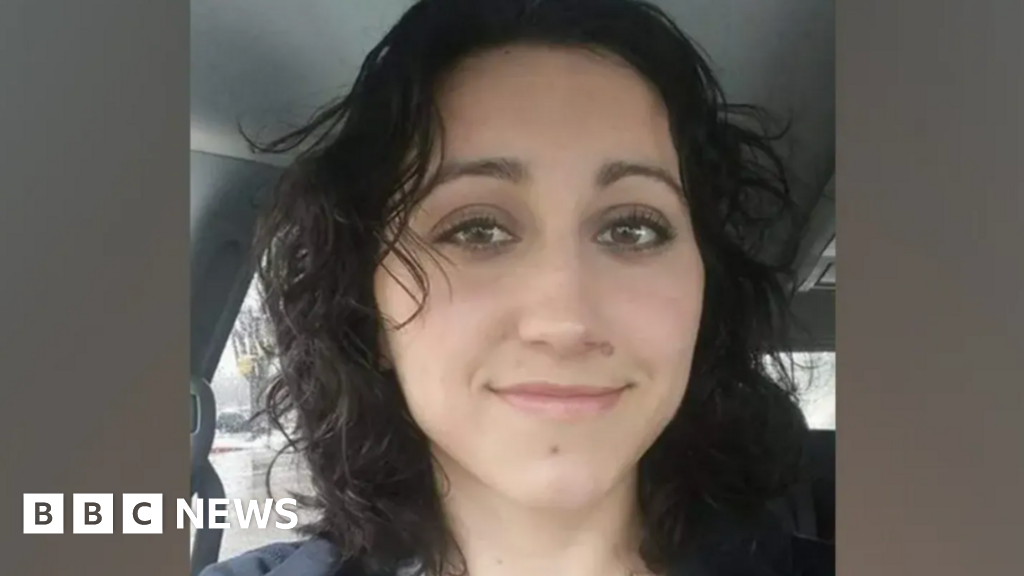ARTICLE AD BOX
 Image source, Paul Harris / BBC
Image source, Paul Harris / BBC
Oliveira Tikuna says this year's drought has been a wake up call
By Stephanie Hegarty
Population correspondent, BBC World Service
The Amazon rainforest experienced its worst drought on record in 2023. Many villages became unreachable by river, wildfires raged and wildlife died. Some scientists worry events like these are a sign that the world's biggest forest is fast approaching a point of no return.
As the cracked and baking river bank towers up on either side of us, Oliveira Tikuna is starting to have doubts about this journey. He's trying to get to his village, in a metal canoe built to navigate the smallest creeks of the Amazon.
Bom Jesus de Igapo Grande is a community of 40 families in the middle of the forest and has been badly affected by the worst drought recorded in the region.
There was no water to shower. Bananas, cassava, chestnuts and acai crops spoiled because they can't get to the city fast enough.
And the head of the village, Oliveira's father, warned anyone elderly or unwell to move closer to town, because they are dangerously far from a hospital.
Oliveira wanted to show us what was happening. He warned it would be a long trip.
But as we turn from the broad Solimões river into the creek that winds towards his village, even he is taken aback. In parts it's reduced to a trickle no more than 1m (3.3ft) wide. Before long, the boat is lodged in the river bed. It's time to get out and pull.
Image source, Paul Harris / BBC
"I'm 49 years old, we've never seen anything like this before," Oliveira says. "I've never even heard of a drought as bad as this."
After three hours of trudging up the drying stream, we give up and turn back.
"If it dries out any more than that, my family will be isolated there," Oliveira says.
To get in or out they'll have to walk across a lakebed on the other side of the village. But that's dangerous - there are snakes and alligators there.
The rainy season in the Amazon should have started in October but it was still dry and hot until late November. This is an effect of the cyclical El Niño weather pattern, amplified by climate change.
El Niño causes water to warm in the Pacific Ocean, which pushes heated air over the Americas. This year the water in the North Atlantic has also been abnormally warm, and hot, dry air has enveloped the Amazon.
Image source, Paul Harris / BBC
Image caption,Flávia Costa says her team has found many plants that show signs of dying
"When it was my first drought I thought, 'Wow, this is awful. How can this happen to the rainforest?'" says Flávia Costa, a plant ecologist at the National Institute for Amazonian Research, who has been living and working in the rainforest for 26 years.
"And then, year after year, it was record-breaking. Each drought was stronger than before."
She says it's too soon to assess how much damage this year's drought has done, but her team has found many plants "showing signs of being dead".
Past dry seasons give an indication of the harm that could be done. By some estimates the 2015 "Godzilla drought" killed 2.5bn trees and plants in just one small part of the forest - and it was less severe than this latest drought.
"On average, the Amazon stopped functioning as a carbon sink," Dr Costa says. "And we mostly expect the same now, which is sad."
As well as being home to a stunning array of biodiversity, the Amazon is estimated to store around 150bn tonnes of carbon.
Many scientists fear the forest is racing towards a theoretical tipping point - a point where it dries, breaks apart and becomes a savannah.
As it stands, the Amazon creates a weather system of its own. In the vast rainforest, water evaporates from the trees to form rain clouds which travel over the tree canopy, recycling this moisture five or six times. This keeps the forest cool and hydrated, feeding it the water it needs to sustain life.
But if swathes of the forest die, that mechanism could be broken. And once this happens there may be no going back.
Brazilian climatologist Carlos Nobre first put forward this theory in 2018. The paper he co-authored says that if the Amazon is deforested by 25% and the global temperature hits between 2C and 2.5C above pre-industrial levels, the tipping point will be hit.
Image source, Andre Coelho
Image caption,When the forest is dry, small fires set to clear land for planting crops burn out of control
"I'm even more worried now than I was in 2018," he says. "I just came back from COP28 and I'm not optimistic that greenhouse gases will be reduced by the agreement targets. If we exceed 2.5C, the risks to the Amazon are horrendous."
Currently 17% of the Amazon has been deforested and the global temperature is 1.1C to 1.2C above pre-industrial levels.
But Dr Nobre finds some hope in the fact that deforestation fell in all countries of the Amazon this year and that all are committed to getting it to zero by 2030. He believes Brazil can get there even sooner.
Not all scientists agree the forest will be transformed completely if Dr Nobre's tipping-point conditions occur. Dr Flávia Costa's research indicates that parts of the forest will survive - particularly those with easy access to groundwater, such as valleys.
But there are worrying signs of degradation everywhere. In Coari, a city in the heart of the Amazon, the air was thick with smoke as we headed off for Oliveira's village.
When the forest is dry, small fires set to clear land for planting crops burn out of control. Usually they burn in already degraded or deforested parts of the Amazon but this year has seen more fires in untouched or primary forest.
And there are other signs that the ecosystem is struggling. In two lakes in the region hundreds of dolphins have been found dead.
Image source, Lucas Amorelli / Sea Shepherd
Image caption,Amazon dolphins died after lake water temperatures reached 40.9C in places
"It was just devastating," says Dr Miriam Marmontel, from the Mamirauá Institute for Sustainable Development. "We were dealing with live animals, beautiful specimens and then five days later, we had 70 carcasses."
In a matter of weeks they found 276 dead dolphins. Dr Marmontel believes it's the temperature of the water that is killing them. It reached 40.9C in places, nearly 4C higher than dolphin - and human - body temperature.
"You can imagine, the animal that has its whole body immersed in that water for so many hours," Dr Marmontel says. "What do you do? That's where you live, then all of a sudden, you're in the middle of this soup and you can't get away."
In her 30 years living in the Amazon, Dr Marmontel never imagined she would see it so dry. She is shocked by how quickly the climate is changing.
"It was like a slap in the face. Because it's the first time that I see and I feel what's happening to the Amazon," she says.
Image source, Lucas Amorelli / Sea Shepherd
Image caption,Transport by canoe became impossible in some places at the height of the drought
"We always say these animals are sentinels because they feel first what's going to come to us. It's happening to them, it's going to happen to us."
For Oliveira, too, this year has been a wake up call.
"We know that we are very much to blame for this, we haven't been paying attention, we haven't been defending our mother Earth. She is screaming for help," he says.
"It's time to defend her."

 1 year ago
21
1 year ago
21








 English (US) ·
English (US) ·